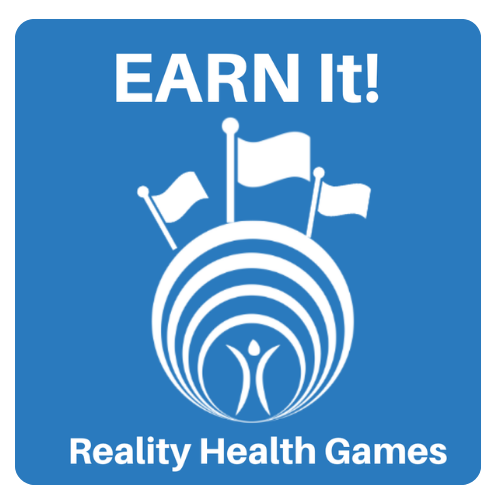Healthy Start: Pregnancy 101
-
Before we started...
Initial Appointment Checklist12 Topics-
Welcome
-
Research Ob in your area (OB, PA< Midwife, etc.)
-
Make Appointment with Provider of Choice
-
Confirm Pregnancy with Provider
-
Stop alcohol, smoking or illicit drug use
-
Talk to doctor about past history
-
Continue to exercise
-
Start Prenatal Vitamin
-
Vital Signs Checked
-
pelvic Exam and Pap Smear
-
Blood Draw
-
Schedule blood draw
-
Welcome
-
First TrimesterInitial Checklist Before First Appointment9 Topics
-
Pap Smear
-
Discuss Labor Plans
-
Knowing your risk factors
-
Continue with prenatal vitamin
-
Monitor Weight & Discuss with provider
-
Continue Exercise and drink plenty of water
-
Between 11th and 13th week, discuss genetic test imaging with provider
-
Between 11th and 13th week, fetal heart tones
-
Discuss Risk Factors with Provider for use of aspirin
-
Pap Smear
-
1.1 Adapting to the First Trimester
-
1.2 Your 1st Trimester Changes
-
1.3 Common Questions 1
-
1.4 Common Questions 2
-
1.5 What is Domestic Abuse?
-
Healthy Habits2.1 Healthy Eating Habits
-
2.2 Nutrition during Pregnancy
-
2.3 Planning your Exercise Routine
-
2.4 How Smoking Affect Pregnancy
-
2.5 Quit Smoking during Pregnancy
-
2.6 Sex and Pregnancy - During
-
2.7 Skincare during Pregnancy
-
Prenatal Visits, Tests and More3.1 Pre-Natal Care
-
3.2 Your Weight
-
3.3 Gestational Diabetes
-
3.4 Kicks Count
-
3.5 Placenta Previa
-
3.6 Preclampsia
-
3.7 Anemia
-
3.8 Blood Glucose
-
3.9 RH Negative Screening
-
2nd Trimester and Body Changes4.0 Second Trimester Checklist10 Topics
-
Weight & Blood pressure Check
-
Fetal Heart, height and weight
-
Prep list of items needed for self, family and new baby
-
Preparation for list of items for baby shower or other sources
-
Securing a breast pump - Buy, use insurance and other sources
-
Continue Weight Monitoring
-
16th Week - Follow up with Provider on Genetic Testing, if indicated
-
By week 24, ultrasound - Boy or Girl, if you want to know?
-
Week 24 - Talk to provider about potential challenges and concerns
-
Weeks 24 - 28 - Gestational Diabetes Screening
-
Weight & Blood pressure Check
-
4.1 Adapting to 2nd Trimester
-
4.2 Your Second Trimester Changes
-
4.3 Back Pain during Pregnancy
-
4.4 Body Changes During Pregnancy
-
3rd Trimester, Comfort Tips and Relieving Back PainThird Trimester Checklist12 Topics
-
Weight and Blood Pressure and Follow-up appointments, if needed
-
Fetal Heart beat and fundal height measurement
-
Discussion with Provider about labor plan (admissions, preparations, etc.)
-
Discuss Childbirth Education with Provider
-
Baby Shower and partner support activation
-
Packing a Bag for Delivery Day
-
Make sure car seat is ready and available
-
28th week - Receive TDAP vaccine
-
28th Week - RH Check
-
28th - 32th Week - Continue Bloodwork for Syphilis and HIV
-
Between 35-37th week: Group B Streptococcal Check
-
39th Week - Disuss Labor Induction and Expectations
-
Weight and Blood Pressure and Follow-up appointments, if needed
-
5.1 Adapting to 3rd Trimester
-
5.2 Your Third Trimester Changes
-
5.3 Comfort Tips
-
5.4 Relieving Back Pain during Pregnancy - Moving Safely
-
5.5 Relieving Back Pain during Pregnancy - Pelvic Tilt and leg lift
-
5.6 Relieving Back Pain during Pregnancy - Positioning Yourself
-
5.7 Relieving Back Pain during Pregnancy - Tailor Sit and Trunk Turn
-
5.8 Relieving Back Pain during Pregnancy - Wall Stretch & Body Bend
-
Infant Nutrition and Care6.1 Labor and Childbirth - Thinking about a Birth Plan
-
6.2 Labor and Childbirth - Support Person Notes
-
6.3 Vaginal Birth
-
6.4 Vaginal Birth after Cesarian
-
6.5 Breech Presentation
-
6.6 Cesarean Birth
-
6.7 - Before Cesarean Birth
-
6.8 Pre-Term Labor
-
6.9 Labor and Childbirth - Your Body Prepares
-
6.10 Recognizing Labor
-
6.11 Preparing for the Hospital
-
6.12 - Stages of Labor
-
6.13 Induction of Labor
-
6.14 Anesthesia Options
-
6.15 Labor and Childbirth - Without Medication
-
6.16 Labor and Childbirth - Immediately After Birth
-
6.17 Preparing to Go Home
-
6.18 Understanding Post Partem Depression
-
Labor, Birth and Aftercare7.1 Infant Nutrition and Care
-
7.2 Caring for Yourself
-
7.3 Anatomy and Breastfeeding
-
7.4 Benefits to Breastfeeding
-
7.5 Breastfeeding - Common Questions
-
7.6 Holds for Breastfeeding
-
7.7 Nutrition While Breastfeeding
-
7.8 Breastmilk - Expressing
-
7.9 Breastmilk - Storing
-
7.10 How to Bottlefeed
-
7.11 Circumsion Care
-
7.12 How to Diaper
-
7.13 Bathing Newborn
-
7.14 Laying Baby Down to Sleep
-
7.15 When to Call the Doctor
-
7.16 Umbilical Cord Care
-
7.17 Signs of Jaundice
-
Infant Safety8.1 Infant Safety
-
8.2 Choosing a Carseat
-
8.3 Car Seat Installation
-
8.4 Car Safety for Newborns
-
8.5 Car Seat Safety Checklist
Labor is divided into three main stages. The first stage starts with regular contractions that open up the cervix. This is called dilation. The second stage is when the baby moves through the birth canal. This is called delivery or descent. And the third and final stage is when the placenta is delivered.
The first stage of labor is the longest stage and can be further divided into two phases: early labor and active labor. Early labor is when contractions begin to happen more frequently but are not yet regular. They might be spaced out every 15 minutes or so and last for about 30 seconds each. This phase can last for several hours or even days. Active labor is when contractions become regular, occurring every five minutes or less and lasting for about 60 seconds each. This is the shortest phase of labor, and usually lasts for two to four hours.
The second stage of labor is when the baby moves through the birth canal. This can be a very short phase, lasting just a few minutes, or it can be a long phase, lasting several hours.
The third and final stage of labor is when the placenta is delivered. This usually happens within 30 minutes after the baby is born but can take up to an hour.
It is important to remember that every labor is different and there is no one “right” way to do things. What matters most is that you and your baby are safe and healthy at the end of it all.






